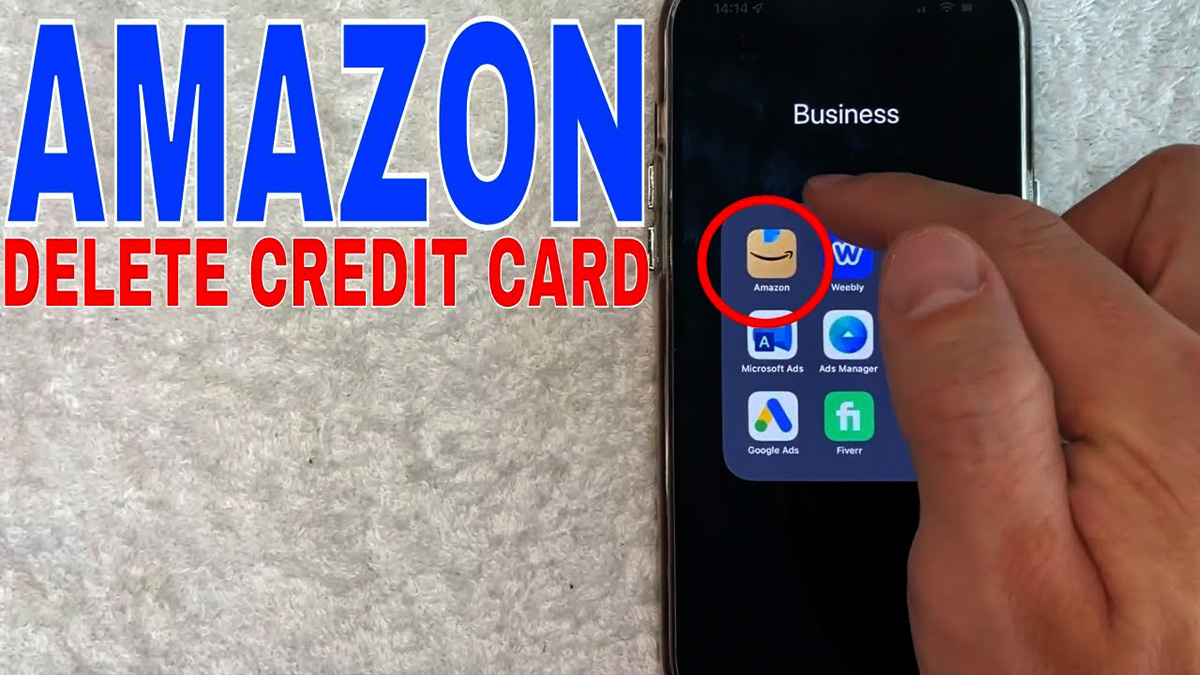

Finance
How To Sell Marketplace Health Insurance
Modified: December 30, 2023
Learn how to successfully sell marketplace health insurance and navigate the complex world of finance in the process. Gain valuable insights and strategies to excel in the finance industry.
(Many of the links in this article redirect to a specific reviewed product. Your purchase of these products through affiliate links helps to generate commission for LiveWell, at no extra cost. Learn more)
Table of Contents
- Introduction
- Step 1: Understanding the Marketplace Health Insurance
- Step 2: Researching the Available Marketplace Plans
- Step 3: Determining Your Eligibility for Marketplace Health Insurance
- Step 4: Applying for Marketplace Health Insurance
- Step 5: Comparing and Choosing the Right Plan for You
- Step 6: Enrolling in Marketplace Health Insurance
- Step 7: Managing Your Marketplace Health Insurance
- Step 8: Renewing or Changing Your Marketplace Health Insurance
- Step 9: Utilizing Financial Assistance and Subsidies
- Step 10: Troubleshooting Common Issues with Marketplace Health Insurance
- Conclusion
Introduction
Marketplace health insurance is a valuable resource for individuals and families seeking affordable healthcare coverage. Designed to provide access to quality healthcare plans at competitive prices, marketplace health insurance is a popular option for those who do not have employer-sponsored coverage or are not eligible for government programs like Medicaid or Medicare.
In this article, we will guide you through the process of selling marketplace health insurance, from understanding the basics to navigating the enrollment process. Whether you are an insurance agent, a broker, or an individual looking to sell marketplace health insurance for yourself or others, this comprehensive guide will provide you with the knowledge and tools to successfully navigate the marketplace.
Before diving into the details, it’s important to note that marketplace health insurance is available through the Health Insurance Marketplace, a platform established by the Affordable Care Act (ACA) and operated by the federal government or individual states. The marketplace offers a range of health insurance plans from private insurance providers, allowing individuals to compare and choose the plan that best fits their needs and budget.
Now, let’s explore the essential steps involved in selling marketplace health insurance:
Step 1: Understanding the Marketplace Health Insurance
Before venturing into selling marketplace health insurance, it is crucial to have a comprehensive understanding of what it entails. Marketplace health insurance is designed to provide individuals and families with affordable and comprehensive healthcare coverage. The plans offered through the Health Insurance Marketplace are required to meet certain standards set by the ACA, ensuring that they cover essential health benefits such as preventive care, hospitalization, prescription drugs, and more.
One key advantage of marketplace health insurance is the availability of financial assistance in the form of tax credits and subsidies. These can help eligible individuals and families lower their monthly premiums and out-of-pocket costs. It’s important to understand the income thresholds and eligibility criteria to determine if your clients qualify for these financial benefits.
Additionally, marketplace health insurance operates on an open enrollment period. This is the designated time frame in which individuals and families can enroll in a health insurance plan or make changes to their existing coverage. The open enrollment period typically takes place once a year, although special enrollment periods may be available for individuals who experience qualifying life events such as getting married, having a baby, or losing other health coverage.
Understanding the marketplace health insurance landscape is essential for effectively selling and navigating this type of coverage. Stay informed about any updates or changes in regulations, plans, and providers to best serve your clients and make informed recommendations.
Here are some key points to consider when understanding marketplace health insurance:
- Availability of comprehensive health coverage
- Essential health benefits included in all plans
- Availability of financial assistance through tax credits and subsidies
- Open enrollment period and special enrollment periods
- Regulatory updates and changes
By familiarizing yourself with these aspects of marketplace health insurance, you will be well-equipped to assist clients and provide accurate information regarding coverage options, costs, and eligibility requirements.
In the next step, we will delve into researching the available marketplace plans to help you guide your clients towards the most suitable options for their healthcare needs and budget.
Step 2: Researching the Available Marketplace Plans
Once you have a solid understanding of marketplace health insurance, the next step is to research the available plans. The Health Insurance Marketplace offers a variety of plans from different insurance providers, each with its own unique features, coverage options, and costs.
Start by familiarizing yourself with the different plan categories available in the marketplace. These categories, known as metal tiers, include:
- Bronze Plans: These plans generally have lower monthly premiums but higher out-of-pocket costs. They may be a suitable choice for individuals or families who don’t anticipate using many healthcare services.
- Silver Plans: Silver plans offer a balance between monthly premiums and out-of-pocket costs. They are a popular choice for individuals and families who expect moderate healthcare usage.
- Gold Plans: Gold plans have higher monthly premiums but lower out-of-pocket costs. These plans may be ideal for individuals or families who anticipate frequent healthcare needs.
- Platinum Plans: Platinum plans offer the highest level of coverage with the highest monthly premiums and lowest out-of-pocket costs. These plans are best suited for those who require frequent and extensive healthcare services.
It’s important to consider the specific needs and preferences of your clients when researching the available plans. Some individuals may prioritize lower monthly premiums, while others may prioritize lower out-of-pocket costs or access to specific healthcare providers and facilities. Take the time to gather information about the benefits and limitations of each plan to help your clients make informed decisions.
When researching marketplace health insurance plans, it’s recommended to:
- Review the plans offered by multiple insurance providers in your area.
- Compare the coverage options, networks, and costs associated with each plan.
- Assess the quality of customer service and support offered by each insurance provider.
- Consider the feedback and reviews from current or previous policyholders.
By conducting thorough research, you will be equipped with valuable insights that can help you guide your clients towards the most suitable marketplace health insurance plans.
Once you have gathered the necessary information about the available plans, you can move on to the next step: determining your clients’ eligibility for marketplace health insurance.
Step 3: Determining Your Eligibility for Marketplace Health Insurance
Before applying for marketplace health insurance, it is important to determine your eligibility. The Health Insurance Marketplace has specific criteria for who can enroll in marketplace plans. Understanding these eligibility requirements will help you assess your clients’ eligibility and guide them through the enrollment process.
Here are some key factors to consider when determining eligibility for marketplace health insurance:
- Citizenship or Immigration Status: To be eligible for marketplace health insurance, individuals must be U.S. citizens or legal immigrants residing in the United States.
- Residency: Individuals must also be residents of the state in which they are applying for coverage. Proof of residency, such as a driver’s license or utility bill, may be required.
- Income: Eligibility for financial assistance, including tax credits and subsidies, is determined by income. The Health Insurance Marketplace sets income thresholds based on the federal poverty level. Individuals or families whose income falls within the specified range may qualify for financial assistance.
- Employer-Sponsored Coverage: Individuals who have access to affordable employer-sponsored coverage may not be eligible for marketplace health insurance. Affordable employer-sponsored coverage is defined as coverage that costs less than 9.5% of the individual’s income.
- Other Government Programs: Individuals who are eligible for other government programs such as Medicaid, Medicare, or the Children’s Health Insurance Program (CHIP) may not be eligible for marketplace health insurance. However, in some cases, individuals may qualify for both marketplace coverage and other government programs.
It is important to note that eligibility requirements may vary slightly between states that operate their own state-based marketplaces. It’s essential to familiarize yourself with the specific eligibility criteria in the state(s) where you intend to sell marketplace health insurance.
Once you have determined your eligibility or your client’s eligibility for marketplace health insurance, you can move on to the next step: the application process.
In the next section, we will explore how to apply for marketplace health insurance and the important information needed to complete the application.
Step 4: Applying for Marketplace Health Insurance
Now that you’ve determined eligibility, it’s time to move on to the application process for marketplace health insurance. Applying for marketplace insurance is a relatively straightforward process, and there are a few different methods available.
Here are the steps to apply for marketplace health insurance:
- Gather the necessary information: Before starting the application, make sure to gather all the required information, such as Social Security numbers for all applicants, immigration documentation, or tax information.
- Choose the application method: You can apply for marketplace health insurance either online, over the phone, by mail, or in-person with the help of a trained assister or navigator.
- Complete the application form: Provide accurate and detailed information on the application form, including personal details, income information, family size, and any relevant documentation.
- Submit the application: Once the application is completed, review it for accuracy and submit it through the chosen application method. If applying online, you will receive a confirmation of submission.
It’s important to note that when applying for marketplace health insurance, you have the option to include all members of your household on the same application. This simplifies the process and ensures that everyone in your family receives coverage through the same plan.
Additionally, it’s crucial to be aware of the open enrollment period, which typically runs from November to mid-December each year. Outside of the open enrollment period, you may still be able to apply for marketplace health insurance if you experience a qualifying life event, such as getting married, having a baby, or losing other health coverage. These events trigger a special enrollment period, during which you can apply for coverage or make changes to your existing plan.
Throughout the application process, it’s important to provide accurate and up-to-date information to ensure that you receive the appropriate marketplace health insurance options.
In the next step, we will discuss how to compare and choose the right plan for your healthcare needs and budget.
Step 5: Comparing and Choosing the Right Plan for You
After applying for marketplace health insurance, the next step is to compare and select the right plan that suits your specific healthcare needs and budget. The Health Insurance Marketplace offers a wide range of plans from different insurance providers, each with varying levels of coverage and costs.
Here are some key factors to consider when comparing and choosing the right marketplace health insurance plan:
- Coverage Options: Assess the coverage options offered by each plan, including the types of services and treatments covered, prescription drug coverage, preventive care, mental health coverage, hospitalization, and more. Make sure the plan meets your specific healthcare needs.
- Network of Providers: Check the network of healthcare providers included in each plan. Ensure that your preferred doctors, hospitals, specialists, and other healthcare providers are in-network to receive the highest level of coverage.
- Premiums and Cost-Sharing: Compare the monthly premiums, deductibles, copayments, and coinsurance associated with each plan. Consider your budget and evaluate how much you can comfortably afford to pay for healthcare expenses.
- Out-of-Pocket Maximum: Take note of the out-of-pocket maximum, which is the maximum amount you would have to pay in a given year for covered services. Once you reach this limit, the plan covers 100% of the costs for covered services.
- Prescription Drug Coverage: If you regularly take prescription medications, review the plan’s formulary to ensure that your medications are covered and at what cost.
- Additional Benefits: Some marketplace health insurance plans may offer additional benefits beyond the essential health benefits required by law. These benefits may include dental and vision coverage, wellness programs, telehealth services, and more.
By carefully considering these factors, you can make an informed decision and choose a marketplace health insurance plan that meets your healthcare needs while staying within your budget.
During the open enrollment period, you have the opportunity to switch plans if you find a better option that suits your needs. However, it’s important to note that once the open enrollment period ends, you cannot change your plan unless you experience a qualifying life event that triggers a special enrollment period.
Once you have selected a marketplace health insurance plan, it’s time to move on to the next step: enrolling in the chosen plan.
In the next section, we will guide you through the enrollment process and provide helpful tips to ensure a smooth enrollment experience.
Step 6: Enrolling in Marketplace Health Insurance
After carefully comparing and choosing the right marketplace health insurance plan, the next step is to enroll in the selected plan. Enrollment is the process of officially signing up for the marketplace health insurance coverage you have selected. It is important to ensure a smooth and timely enrollment process to guarantee seamless access to healthcare services.
Here are the key steps to enroll in marketplace health insurance:
- Review your selected plan: Before beginning the enrollment process, take the time to review the details of the plan you have chosen. Ensure that it is the correct plan with the desired coverage, cost-sharing structure, and network of providers.
- Access the online marketplace: If enrolling online, visit the Health Insurance Marketplace website or the state-based marketplace website if applicable. Log in to your account or create a new account if it is your first time using the marketplace.
- Start the enrollment process: Follow the prompts and instructions provided on the website to begin the enrollment process. You will be asked to provide personal information, including your name, address, Social Security number, and income details.
- Complete the application: Fill out the application form accurately, providing all necessary information. Make sure to review it thoroughly before submitting to avoid errors or omissions.
- Select your plan: Once the application is completed, you will be presented with the available marketplace health insurance plans in your area. Select the plan you have previously chosen and proceed to the next step.
- Confirm enrollment: Review the enrollment summary to ensure all the details are correct, including the selected plan, coverage start date, and any premium or financial assistance information. Confirm your enrollment to finalize the process.
- Pay the premium: After enrolling, you will need to pay the first premium to activate your coverage. The premium payment process varies depending on the insurance provider and the plan. Follow the instructions provided by the insurance company to make the payment.
It’s essential to complete the enrollment process within the designated open enrollment period. Missing the deadline may result in a delay of coverage or the need to wait until the next open enrollment period.
Once you have successfully enrolled in marketplace health insurance, it’s important to keep track of important dates and deadlines related to your coverage. For example, be aware of when your coverage starts, when your premium payments are due, and when you can make changes to your plan during the open enrollment period each year.
In the next step, we will discuss how to effectively manage your marketplace health insurance once you are enrolled.
Step 7: Managing Your Marketplace Health Insurance
Once you have successfully enrolled in marketplace health insurance, it is important to actively manage your coverage to ensure that it meets your evolving healthcare needs. Managing your marketplace health insurance involves staying informed, reviewing your coverage periodically, and making any necessary updates or changes when needed.
Here are some key aspects to consider when managing your marketplace health insurance:
- Understanding your plan: Take the time to familiarize yourself with the details of your plan, including your benefits, coverage limitations, network of providers, and cost-sharing structure. Understand how your plan works and what services are covered.
- Keeping your information up to date: Notify the Health Insurance Marketplace or your insurance provider of any changes to your personal information, such as address, income, or family size. This ensures that you receive accurate information and that your eligibility for financial assistance is properly evaluated.
- Reviewing your coverage annually: Marketplace health insurance plans can change from year to year, including premiums, benefits, and network of providers. It is essential to review your coverage during the open enrollment period and assess if it still meets your healthcare needs. Consider any changes in your health status, prescription drug needs, or anticipated healthcare usage.
- Understanding your rights and protections: Familiarize yourself with your rights and protections as a marketplace health insurance consumer. This includes understanding your coverage for preventive care, due process for claims and appeals, and your rights to privacy and non-discrimination.
- Utilizing preventive care services: Take advantage of the preventive care services offered through your marketplace health insurance plan. These services, such as vaccinations, screenings, and annual check-ups, can help detect and prevent illnesses before they become more serious and costly.
- Keeping track of important dates and deadlines: Stay informed about important dates and deadlines related to your marketplace health insurance, including the open enrollment period, premium payment due dates, and any specific renewal or change deadlines.
By actively managing your marketplace health insurance, you can ensure that your coverage remains comprehensive, affordable, and aligned with your healthcare needs.
In the next step, we will discuss the process of renewing or changing your marketplace health insurance, which typically occurs during the open enrollment period.
Step 8: Renewing or Changing Your Marketplace Health Insurance
Renewal or changing your marketplace health insurance is an important step in managing your coverage and ensuring that it continues to meet your healthcare needs. The open enrollment period is the designated timeframe each year when individuals can renew their existing marketplace health insurance plans or make changes to their coverage.
Here are some key points to consider when renewing or changing your marketplace health insurance:
- Open enrollment period: The open enrollment period typically occurs between November and mid-December each year. During this time, you can renew your existing plan for the next coverage year or switch to a different plan.
- Review your current coverage: Before making a decision, carefully review your current marketplace health insurance plan. Consider any changes in your healthcare needs, prescription medications, or other factors that may prompt you to switch plans.
- Compare your options: Use the open enrollment period as an opportunity to explore and compare other marketplace health insurance plans available to you. Assess the coverage options, costs, networks of providers, and any additional benefits offered by different plans.
- Consider changes in personal circumstances: Changes in your income, family size, or eligibility for other healthcare programs may impact your marketplace health insurance eligibility or eligibility for financial assistance. Take these changes into account when evaluating your options.
- Enroll by the deadline: It is crucial to complete the renewal or change process within the open enrollment period. Missing the deadline may result in a gap in coverage or the need to wait until the next open enrollment period.
- Pay attention to premium changes: Keep in mind that premiums for marketplace health insurance plans can change from year to year. Make sure to review the updated premium amounts and assess their affordability for the upcoming coverage year.
By actively reviewing and assessing your marketplace health insurance options during the open enrollment period, you can ensure that you have the most suitable coverage for your healthcare needs and budget.
In the next step, we will discuss how to utilize financial assistance and subsidies that may be available to you when enrolled in marketplace health insurance.
Step 9: Utilizing Financial Assistance and Subsidies
One of the significant advantages of marketplace health insurance is the availability of financial assistance and subsidies to help individuals and families afford their coverage. These financial resources can significantly reduce the monthly premiums and out-of-pocket costs associated with marketplace health insurance.
Here are some key points to consider when utilizing financial assistance and subsidies:
- Tax credits: Marketplace health insurance plans offer premium tax credits, also known as subsidies, which are designed to lower the monthly premium costs for individuals and families. These tax credits are based on your estimated annual income and are directly applied to your premium payments.
- Eligibility for financial assistance: To determine your eligibility for financial assistance, you will need to provide information about your income and household size during the application process. The Health Insurance Marketplace will assess your information and determine if you qualify for subsidies.
- Cost-sharing reductions: In addition to premium tax credits, individuals and families with lower incomes may be eligible for cost-sharing reductions. These reductions help lower out-of-pocket costs, such as deductibles, copayments, and coinsurance, making healthcare services more affordable.
- Estimate your subsidy eligibility: The Health Insurance Marketplace provides tools and calculators that allow you to estimate your subsidy eligibility and potential savings. These estimators take into account your income, family size, and other relevant factors to provide an estimate of the financial assistance you may receive.
- Report income changes: If your income changes during the coverage year, it is important to report these changes to the Health Insurance Marketplace. Significant income changes may affect your eligibility for subsidies, and not reporting them could result in discrepancies in your subsidy amounts.
Utilizing financial assistance and subsidies can make marketplace health insurance more affordable and accessible for many individuals and families. Take advantage of these resources to ensure that you can secure comprehensive healthcare coverage without breaking your budget.
Remember to review the specific guidelines and rules regarding subsidies and financial assistance in your state or the state in which you are applying for marketplace health insurance.
In the final step, we will discuss common issues that may arise with marketplace health insurance and how to troubleshoot them.
Step 10: Troubleshooting Common Issues with Marketplace Health Insurance
While marketplace health insurance can provide valuable coverage, it is not uncommon to encounter certain issues or challenges along the way. Being aware of common issues and understanding how to troubleshoot them can help you navigate the marketplace more effectively. Here are some common issues you may encounter with marketplace health insurance and tips to address them:
- Missing coverage documents: If you do not receive important documents related to your marketplace health insurance, such as your enrollment confirmation or insurance card, reach out to your insurance provider or the Health Insurance Marketplace for assistance. They can help you obtain the necessary documents to access your coverage.
- Inaccurate information: If you notice any inaccuracies in your marketplace health insurance application or plan details, take immediate action to correct them. Contact the Health Insurance Marketplace or your insurance provider to update your information and ensure that you have accurate coverage.
- Denied claims or coverage: If a claim is denied or coverage is denied for a specific service, review the reason for the denial with your insurance provider. It could be a misunderstanding or an error that can be resolved through an appeal or clarification of coverage terms.
- Difficulty finding in-network providers: If you face challenges finding in-network healthcare providers, consult your plan’s provider directory or contact your insurance provider for assistance. They can help guide you to the nearest in-network providers or explore alternative options if necessary.
- Changes in medications or treatments: If your marketplace health insurance plan no longer covers a medication or treatment that you require, consult with your healthcare provider. They can work with you to explore alternative options or facilitate the process of requesting a coverage exception.
- Issues with premium payments: If you encounter difficulties with premium payments, such as missed payments or payment processing errors, contact your insurance provider immediately. They can provide guidance on resolving payment issues and help ensure continuous coverage.
If you encounter any issues with your marketplace health insurance, it is essential to address them promptly. Reach out to your insurance provider or the Health Insurance Marketplace for assistance, as they are there to help you navigate and resolve any challenges you may face.
By troubleshooting these common issues, you can ensure that your marketplace health insurance coverage remains accessible, reliable, and meets your healthcare needs.
Congratulations! You have now completed all ten steps to successfully sell and navigate marketplace health insurance. Remember to stay informed about any updates or changes in regulations, coverage options, and tools available to assist you in the process.
Best of luck in your journey of selling and utilizing marketplace health insurance to provide affordable and comprehensive healthcare coverage for yourself or your clients!
Conclusion
Selling and navigating marketplace health insurance can be a complex process, but by following these ten steps, you can successfully navigate the Health Insurance Marketplace and help individuals and families obtain affordable and comprehensive healthcare coverage.
We began by understanding the basics of marketplace health insurance, including the essential benefits and financial assistance available. Then, we delved into researching and comparing different marketplace plans to find the best fit for specific healthcare needs and budget.
Next, we discussed determining eligibility and applying for marketplace health insurance, emphasizing the importance of providing accurate information during the application process.
Once enrolled, actively managing marketplace health insurance is crucial. Regularly reviewing coverage, staying informed about key dates, and understanding your rights and protections are essential steps in managing your coverage effectively.
The open enrollment period provides an opportunity to renew your existing plan or make changes. Utilizing financial assistance and subsidies can help make marketplace health insurance more affordable and accessible.
Finally, we discussed common issues that may arise with marketplace health insurance and provided troubleshooting tips to overcome them.
Remember, marketplace health insurance is designed to provide individuals and families with accessible and comprehensive coverage. By staying informed, being proactive, and utilizing the available resources, you can navigate the marketplace with confidence and ensure that you or your clients have the coverage needed for quality healthcare.
Continue to educate yourself on any changes in regulations, plans, and providers to stay up-to-date and better serve your clients. With your expertise and understanding of marketplace health insurance, you can make a positive impact on individuals’ lives by helping them access the healthcare coverage they deserve.
Congratulations on completing these ten steps! Best of luck as you continue your journey in selling and utilizing marketplace health insurance.














